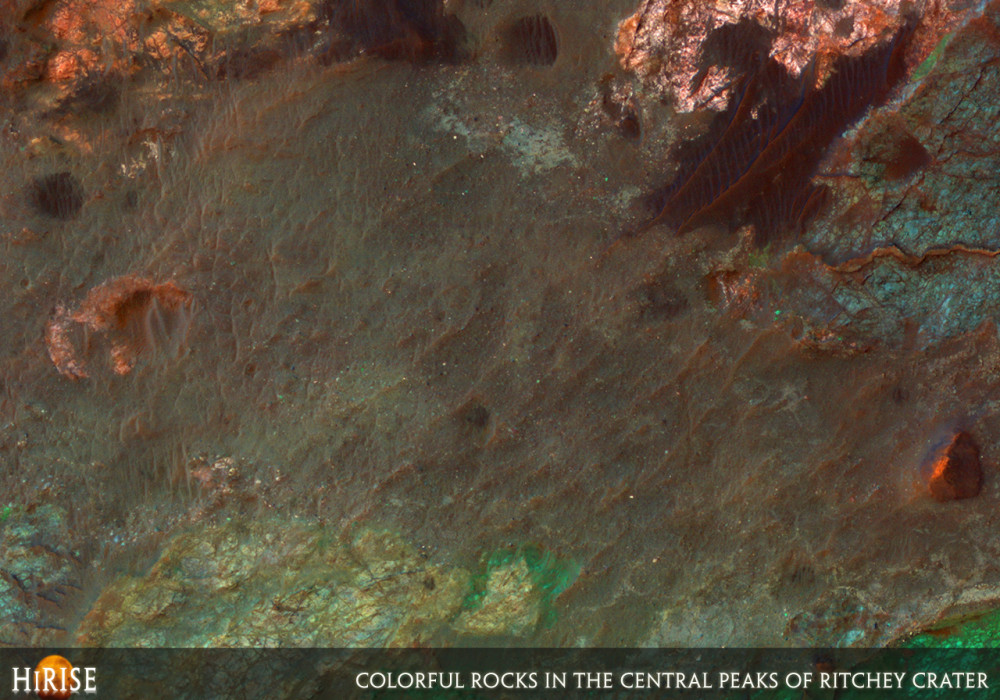Central peaks form when a large impact crater rebounds after the initial compression stage, lifting deep bedrock up into hills or mountains. Ritchey Crater is a large (more than 100 kilometer diameter), well-preserved impact crater in the southern highlands of Mars, south of Valles Marineris.
This HiRISE color image reveals a rich diversity of colors and textures in the central region of the crater. For example, the subimage shows several densely fractured outcrops of bedrock with a range of colors due to different rock types, partially covered by dark sand dunes.
In the middle of the area is medium-dark material that contains many bright rock fragmentsperhaps breccia (broken up and randomly jumbled rocks). There are raised ridgesboth straight and sinuouswhich may mark fractures and channels that could have been indurated (hardened) by water-deposited minerals. The heat of the impact event could have driven hydrothermal circulation of water for many centuries.
The colors in this image are from the infrared, red, and blue-green filters, in which each color band is given a separate contrast stretch. In the subimage the colors were further enhanced in intensity to reveal more subtle variations. If a rover could land here, it would be able to study a treasure trove of diverse rocks and minerals and ancient environments.
Written by: Alfred McEwen (16 October 2007)
This is a stereo pair with PSP_006005_1515 .
More info and image formats at http://hirise.lpl.arizona.edu/PSP_005372_1515
Image: NASA/JPL/University of Arizona
